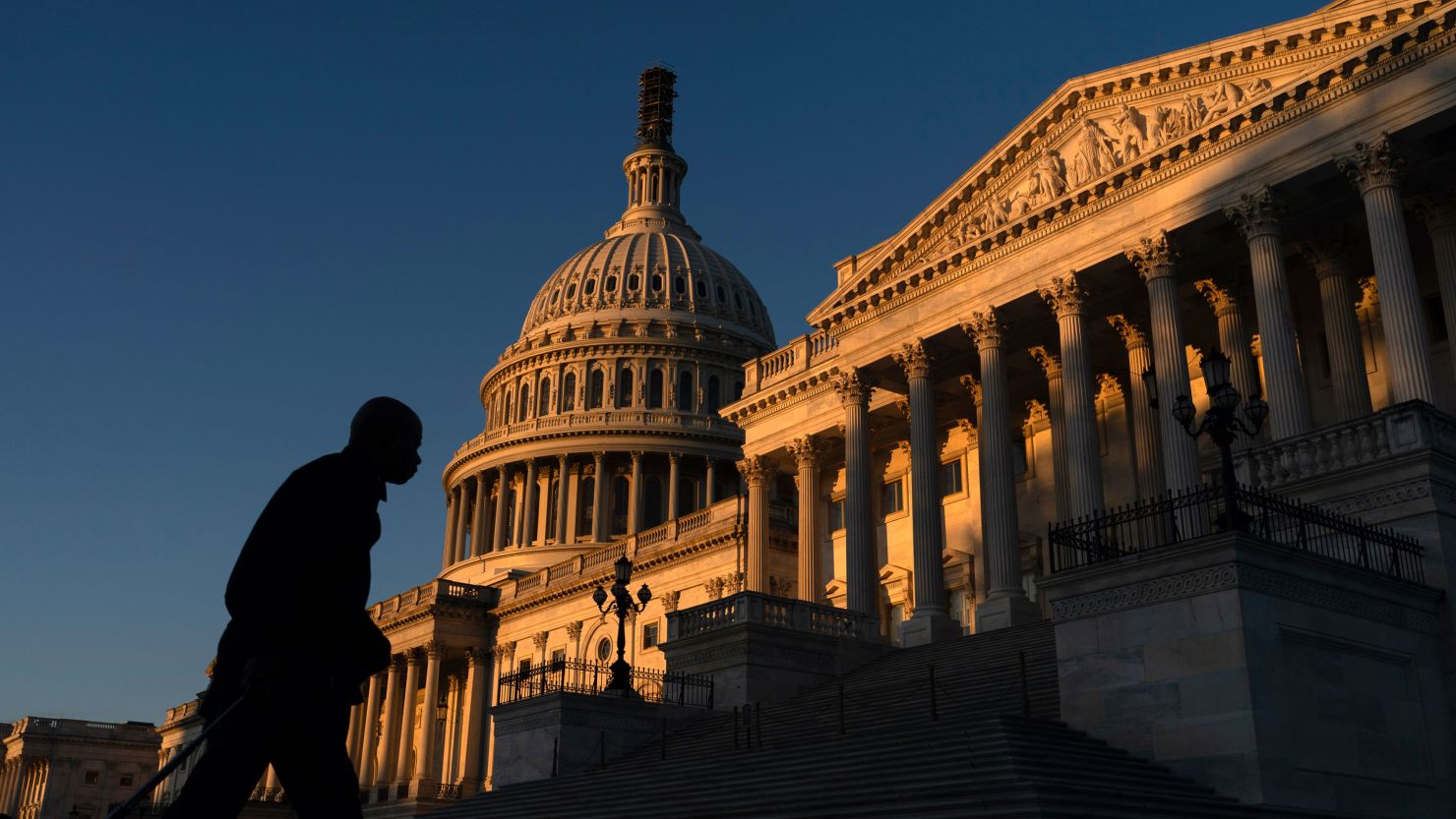Multiple Supreme Court showdowns. Closed-door negotiations.?And millions of dollars in litigation.
After months of legal and legislative skirmishes around the country, much of the redistricting drama of the 2024 election cycle is behind us. And it has ended pretty close to where it began: Just a handful of seats could determine which party controls the US House of Representatives, where Republicans now hold a threadbare majority.
In North Carolina, newly empowered GOP state legislators took an aggressive approach with their map-drawing, crafting lines that are expected to allow their party to flip at least three seats now held by Democrats. But, in recently concluded redistricting in New York, Democrats, who had final say over the map, adopted a more modest position – essentially turning just one Republican-held seat a deeper shade of blue.
In the South, Democrats are expected to gain two seats as a result of Voting Rights Act rulings out of Alabama and Louisiana. But a protracted battle over the congressional map in another Southern state, Georgia, has not changed the partisan balance of the state’s US House delegation heading into November.
“It’s amazing that with all of the states where we’ve had things going on and with all the different lawsuits, we are really only talking about a small number of districts that are guaranteed to change hands as a result of this entire shuffle,” said Nick Seabrook, a political scientist at the University of North Florida and the author of the 2022 book “One Person, One Vote: A Surprising History of Gerrymandering in America.”
“We have actually emerged nationally with a pretty fair map,” he said. “I certainly think that there are ample opportunities for either party to win.”
Adam Kincaid, the president and executive director of the National Republican Redistricting Trust, sees a “tick to the right” under the new landscape, with the likely net addition of two more House seats that former President Donald Trump would have carried in 2020. But he cautioned that it was still a “tight map” and a “tight electorate.”
“From top to bottom, the country is a 50-50 country right now,” Kincaid said.
(Although Republicans control the House by a narrow margin, under the map used in the 2022 midterm elections, 17 of those GOP lawmakers were elected in communities that backed President Joe Biden in 2020.)
Democrats, meanwhile, say they emerged in a stronger position after wielding the nearly 60-year-old Voting Rights Act to prevail in legal fights in deep-red Alabama and Louisiana. Federal judges ordered lawmakers in those states to give Black residents more opportunities to elect House candidates of their choice.
“Alabama and Louisiana are just two states once thought to be unreachable in the fight for fairness that have quickly become more representative” as a result of the legal actions, John Bisognano, president of the National Democratic Redistricting Committee, said in a statement. “I’m confident the House map will remain highly competitive going into 2024.”
Here’s a state-by-state look at the recent redistricting disputes and where they stand:
Louisiana
Facing a court-ordered deadline, the Republican-controlled state Legislature in January approved a map with a second Black-majority district that?is expected to be?in effect for this year’s elections.
The action, viewed as a win for Democrats, endangers the seat now held by Republican Rep. Garret Graves.
The implementation of the new map follows a protracted legal battle over the state’s congressional district lines.
Although Black people make up roughly a third of the state’s population, Louisiana has just one Black lawmaker – who is also the lone Democrat – in its six-member US House delegation.
A federal judge threw out the state’s Republican-drawn map in 2022, saying it likely violated the Voting Rights Act. Republican officials in the state appealed to the US Supreme Court, which put the lower-court ruling on hold until it decided the Alabama case, which it did in June this year.
Once the high court had weighed in on the Alabama case, the legal skirmishes again lurched to life in Louisiana.
A federal court had given the GOP-controlled state Legislature until the end of January to draw a new map, after deciding that the lower court had ruled correctly that the state lawmakers’ map improperly diluted the voting power of Louisiana’s Black residents.
If the Legislature had not acted by that deadline, the lower court could have proceeded to a full trial to resolve the map in time for this year’s elections. A dozen non-Black voters filed a legal challenge to the Legislature’s map, arguing it was an illegal racial gerrymander,?and a?three-judge panel agreed.
That set off a fresh appeal to the US Supreme Court, which on May 15 paused the panel’s ruling in an order that?will likely allow the Legislature’s map?to be used in this year’s elections.
New York
Republicans flipped four US House seats in New York in the 2022 midterm elections, victories that helped secure their party’s majority in the chamber.
Then, a?ruling by the state’s highest court?appeared to jeopardize those gains by potentially making it easier for Democrats to pick up as many as six GOP-held seats.
In the end, however, the Democratic state lawmakers, who hold ultimate control of the redistricting process, settled on a map that made only modest adjustments to the status quo lines.
First, a bit of history: A state court judge oversaw the process of?drawing the map used in the 2022 elections?following a long legal battle and the inability of New York’s bipartisan Independent Redistricting Commission to agree on new lines. But Democrats?scored a court victory last summer?when a state appellate court ruled that the redistricting commission should redraw the map.
Republicans appealed that decision, and oral arguments were held in November before New York’s Court of Appeals, the state’s highest court.
On December 12, the Court of Appeals ordered the state to once again restart the mapmaking process. As a result, New York’s redistricting commission created a new map, but the Democratic-controlled state Legislature tinkered with the commission’s lines, as permitted under state law.
The?Legislature’s final product?ended up putting a Central New York seat held by Republican freshman Brandon Williams at greater risk for his party. It also shored up for Democrats Tom Suozzi’s Long Island seat, which the party?flipped?in a February special election to succeed expelled former Rep.?George Santos.
Leaders of both political parties say they can live with the map’s modest approach, which still puts the Empire State at the epicenter of the battle for the House. But some progressives have criticized New York Democrats, who hold supermajorities in the state Legislature, for not taking a more aggressive approach.
Former New York Rep. John Faso, a Republican who had been a key player in litigation over redistricting, said the map drawn by Democrats “has no material differences from the current map.”
“This turned out to be much ado about very little,” he added.
North Carolina
North Carolina’s legislature, where Republicans hold a supermajority, has drawn new congressional lines that observers say could prove a windfall for the GOP and boost the party’s chances of retaining its House majority next year.
The state’s current House delegation is split 7-7 between Democrats and Republicans.
A map that Republican state lawmakers approved put three House Democrats in what one expert called “almost impossible to win” districts.
The affected Democrats were Reps. Jeff Jackson, who currently represents a Charlotte-area district; Wiley Nickel, who holds a Raleigh-area seat; and Kathy Manning, who represents Greensboro and other parts of north-central North Carolina. All three opted not to seek reelection to the House.
A fourth Democrat, Rep. Don Davis, saw his district retooled to become more friendly toward Republicans while remaining competitive for both parties.
State-level gains in the 2022 midterm elections gave the GOP new sway over redistricting in this swing state – Republicans flipped the state Supreme Court, whose members are chosen in partisan elections. Last year, the new GOP majority on the court tossed out a 2022 ruling by the then-Democratic leaning court against partisan gerrymandering.
A map that had been created after the Democratic-led high court’s ruling resulted in the current even split in the state’s House delegation.
Democratic Gov. Roy Cooper does not have veto power over redistricting legislation. A group of Black and Latino residents of North Carolina filed a lawsuit alleging that the GOP-approved map “intentionally discriminates” against minority voters in violation of the US Constitution.
Alabama
In one of the cycle’s highest-profile redistricting cases, a three-judge panel in Alabama approved a map that created a second congressional district with a substantial Black population. Before the court action, Alabama – which is 27% Black – had only one Black-majority district out of seven seats.
The fight over the map went all the way to the US Supreme Court – which issued a surprise ruling, affirming a lower-court opinion that ordered Alabama to include a second Black-majority district or “something quite close to it.” Under the map used for the 2024 election, the state’s 2nd District now loops into Mobile to create a seat where nearly half the population is Black.
The high court’s 5-4 decision in June saw two conservatives, Chief Justice John Roberts and Justice Brett Kavanaugh, side with the three liberals to uphold the lower-court ruling. Their action kept intact a key pillar of the Voting Rights Act: that it’s illegal to draw maps that effectively keep Black voters from electing a candidate of their choice.
The ruling reverberated around the country and affected the outcome of similar court cases underway in Louisiana and Georgia that centered on whether Republican-drawn maps improperly diluted Black political power in those states.
Given that Black voters in Alabama have traditionally backed Democrats, the party now stands a better chance of winning the newly reconfigured district and sending two of its members to Congress after November’s elections.
The new map also could result in two Black US House members from Alabama serving together for the first time in state history.
Georgia
Georgia Republicans, who hold a governing trifecta in the state,?finalized a new congressional map?last year that safeguarded their party’s dominance in state politics and dashed Democrats’ hopes of adding an additional US House seat.
The new map complied with an order issued by US District Judge Steve Jones to establish an additional Black-majority district.?But it preserved the GOP’s 9-5 edge in Georgia’s US House delegation by moving the Atlanta-area district represented by??Rep. Lucy McBath, a Black Democrat, farther into Republican territory.
Jones had ordered state lawmakers?to draw a new congressional map?by December 8, arguing that the Republican-controlled legislature improperly diluted the political power of Black voters in their establishment of district boundaries following the 2020 census.?In that ruling, Jones said state lawmakers’ earlier map had violated the Voting Rights Act.
In a big win for Republicans, Jones in late December ruled that the new legislature-drawn map that preserved Republicans’ 9-5 advantage “fully complied” with his order.
A separate federal case in Georgia challenges the congressional map on constitutional grounds.
Florida
A state judge in September struck down congressional lines for northern Florida that had been championed by Gov. Ron DeSantis, ruling that the Republican governor’s map had improperly diluted Black voting power.
This case, unlike the Alabama fight decided by the US Supreme Court, centers on provisions in the state constitution.
The judge concluded that the congressional boundaries – which essentially dismantled a seat once held by Al Lawson, a Black Democrat, that connected Black communities across a northern reach of the Florida – violated the state’s Fair Districts amendments, enacted by voters. One amendment specifically bars the state from drawing a district that diminishes the ability of racial minorities “to elect representatives of their choice.”
But in December, a state appeals court upheld the map DeSantis had advocated, saying the plaintiffs “failed to present any evidence” that the earlier version of the district – which connected Black communities from Jacksonville to Tallahassee – contained a singular cohesive community that would have a right to protection under Florida’s constitution.
The case is now before the all-Republican state Supreme Court, where DeSantis appointees hold most seats. The disputed map appears likely to remain in place for this year’s elections after the court denied the plaintiffs’ request to speed up the case and hold arguments before the congressional candidate qualifying period in April.
In a separate case — centered on whether the map violates the US Constitution – a federal court sided with DeSantis.
Observers say that in the end, the outcome of the state litigation is more likely than the federal case to determine the future of the North Florida district, given the state constitution’s especially strong protections for the voting rights of racial minorities and the lower burden of proof required to establish that those rights were abridged.
Kentucky
The Kentucky Supreme Court in December rejected arguments from Democrats that a map drawn by the state’s Republican-controlled legislature violated the state constitution as an “extreme partisan” gerrymander.
The dispute centered on lawmakers’ decision to move Kentucky’s capital city – Democratic-leaning Frankfort – out of the 6th Congressional District and into an oddly shaped – and solidly Republican – 1st District. Doing so helped shore up the GOP odds of holding the 6th District, represented by Republican Andy Barr.
Under its previous lines, the 6th District was a more competitive seat. (Democrat Amy McGrath came within 3 points of beating Barr in 2018; last year, Barr won a sixth term under the new lines by 29 points.)
A lower-court judge had ruled that the Republican-drawn map did not violate the state’s constitution, and the state’s high court, in a December 14 ruling, agreed.
South Carolina
A redistricting case pending before the US Supreme Court centers on the future of a Charleston-area seat held by Republican Rep. Nancy Mace, who made headlines last year for joining House GOP hard-liners in voting to remove Kevin McCarthy as speaker.
Last year, a three-judge panel concluded that the lines for the coastal 1st Congressional District, as drawn by state GOP lawmakers, amounted to an unconstitutional racial gerrymander.
The Republican lawmakers appealed to the US Supreme Court. During oral arguments, several justices in the court’s conservative majority expressed skepticism that South Carolina officials had engaged in an improper racial gerrymander and seemed inclined to reinstate the lawmakers’ map.
The 2024 elections will proceed under the current map, the three-judge panel ruled in March. The judges, in part, cited the delay in the high court issuing a decision.
New Mexico
Republicans in New Mexico argued that the congressional lines drawn by the Democrats who control state government amounted to an illegal gerrymander under the state’s constitution.
At stake: a swing district along the US border with Mexico. If Republicans had prevailed, the 2nd District seat – now held by a Democratic Rep. Gabe Vasquez – could have become more favorable to Republicans.
But a state judge in October upheld the map drawn by Democrats, and the New Mexico Supreme Court affirmed that ruling.
Utah
The state Supreme Court, in a case it heard in July, is considering whether it even has the authority to weigh in on map-drawing decisions by the GOP-controlled state Legislature.
Republican state officials have argued that the court’s power over redistricting decisions is limited.
Advocacy groups and a handful of voters are challenging a congressional map that further carved up Democratic-leaning Salt Lake County between four decidedly Republican districts.
Doing so, the plaintiffs asserted in their lawsuit, “takes a slice of Salt Lake County and grafts it onto large swaths of the rest of Utah,” allowing Republican voters in rural areas and smaller cities far away from Salt Lake to “dictate the outcome of elections.”
This story and headline have been updated.
CNN’s Ethan Cohen and Renée Rigdon contributed to this report.




